企业人事管理系统的设计(IntelliJ IDEA,SSH,MySQL)(论文说明书11000字,程序代码,MySQL数据库)
摘要:人事管理是一个企业正常运行的基础,而且传统管理方法也比较繁琐。运用计算机辅助企业的人事管理,能够节省大量资源,对企业的现代化管理有重要意义。
本文介绍的人事管理系统是基于Java Web开发的,采用基于MVC思想的SSH框架。开发本系统前,我们需要了解相关的基本知识如Java语言、JSP和基本框架。配置好相关环境,包括JDK,数据库、服务器和开发工具。之后,我们需要对该系统进行需求分析和系统设计。结合企业对一套高效的人事管理系统的需求,进行详细的系统功能设计和数据库设计,包含的主要功能有,对员工个人信息的管理,对部门和员工职务的管理,对员工的考勤和工资管理,对企业的招聘计划和培训计划的管理。然后主要进行对该系统的编码实现,该阶段工作主要依靠开发工具实现开发。最后,将进行系统测试,测试的目的是检验系统是否达到需求分析和系统设计的要求。
关键词:人事管理;Java;JSP;MVC模式
Enterprise personnel management system
Abstract: Personnel management is the basis of the normal operation of an enterprise, and the traditional management method is more cumbersome. The use of computer aided enterprise personnel management, can save a lot of resources, the enterprise's modern management is of great significance.
The personnel management system introduced in this paper is based on Java Web development, using SSH framework based on MVC idea. Before developing this system, we need to know the basic knowledge such as Java language, JSP and basic framework. Configure the environment, including the JDK, database, server and development tools. After that, we need to conduct requirement analysis and system design for the system. Combined with the needs of enterprises for an efficient personnel management system, detailed system function design and database design are carried out, including the main functions, the management of employees' personal information, the management of departments and employees' positions, the management of employees' attendance and salary, the management of enterprises' recruitment plans and training plans. Then it mainly carries on the coding realization to this system, this stage work mainly depends on the development tool realization development. Finally, the system will be tested to verify whether the system meets the requirements of requirements analysis and system design.
Key words: Personnel management; Java; JSP; MVC pattern
4.1.1 管理员功能模块
(1)系统管理:管理员在登录系统后,可以修改密码,操作完成后可以退出系统。
(2)人事管理:管理员可以对部门信息进行管理,对员工的个人信息进行管理,对员工的职务进行管理,对员工签订的合同进行管理,以及对企业培训计划的管理等。
(3)招聘管理:管理员可以增加招聘信息,对招聘进行记录和查看应聘者的信息。
(4)员工考勤管理:管理员可以对员工的考勤情况进行记录,并且能进行修改或者删除。
(5)员工工资管理:管理员可以记录员工的应发工资,并进行更改或删除。
(6)员工调动管理:管理员可以对员工的工作部门进行修改。
(7)保险福利管理:管理员增加员工的福利发放的记录,并能进行修改或删除。
(8)系统账号查询:查看员工的系统账号、密码、工作部门、真实姓名。
4.1.2 员工功能模块
(1)系统管理:员工可以在登陆后修改自己的密码,并可以在操作完成后退出系统。
(2)人事管理查询:员工可以查看自己的个人基本信息,查看与自己相关的企业培训计划,下载并查看合同。
(3)招聘管理:员工可以查看公司招聘的职位,需要的人数和相关待遇等。
(4)员工考勤管理:员工可以查看自己的考勤记录。
(5)员工工资管理:员工可以查看相应月份的应发工资。
(6)员工福利管理:员工可以查看自己福利种类,发放的月份以及具体金额。
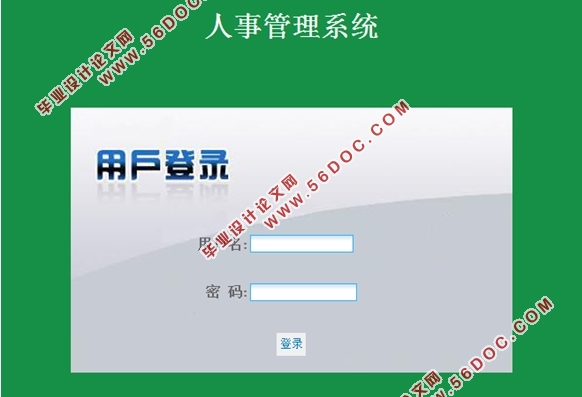

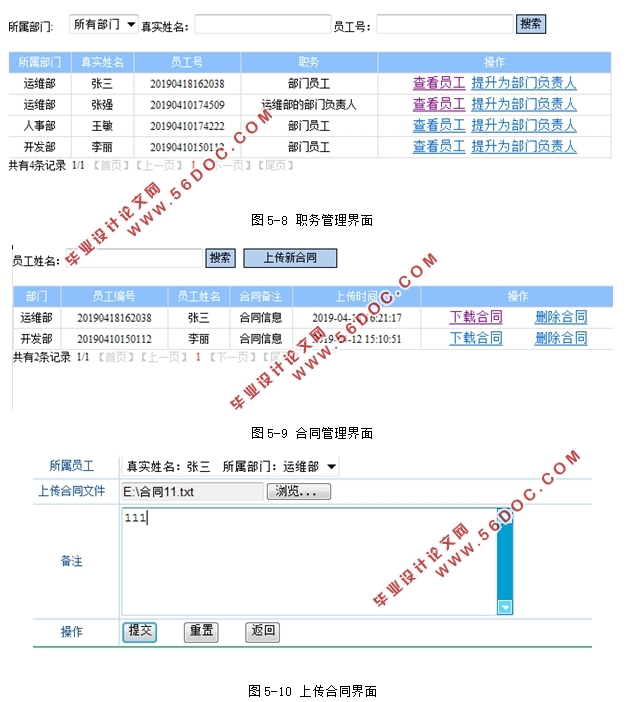
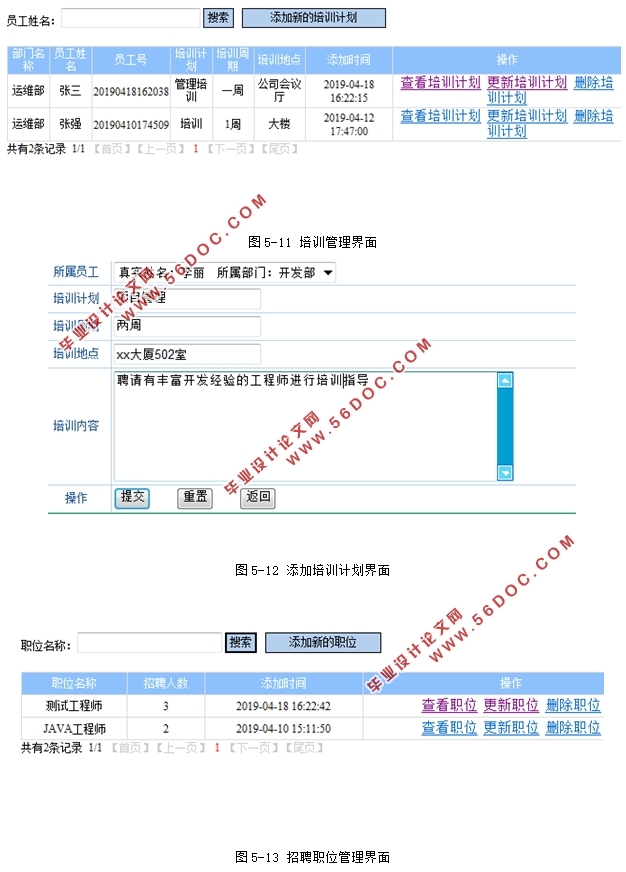
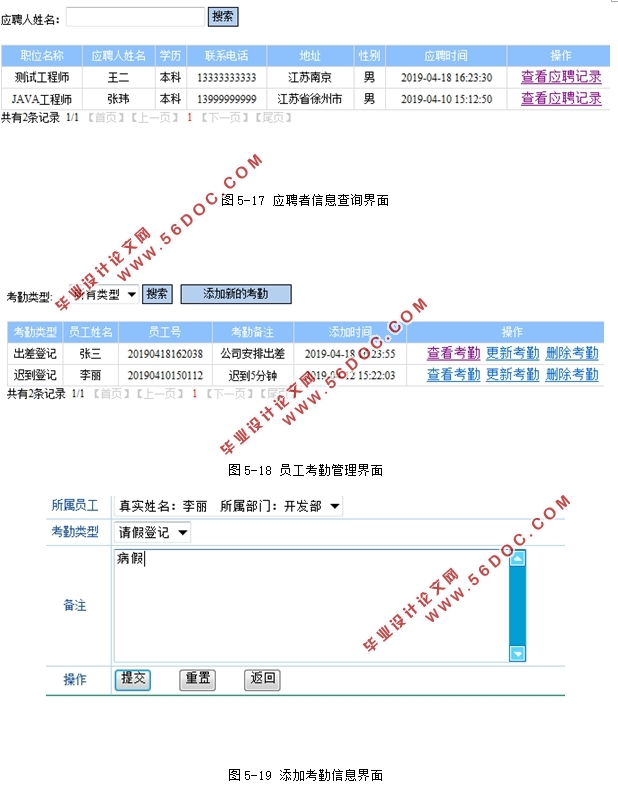
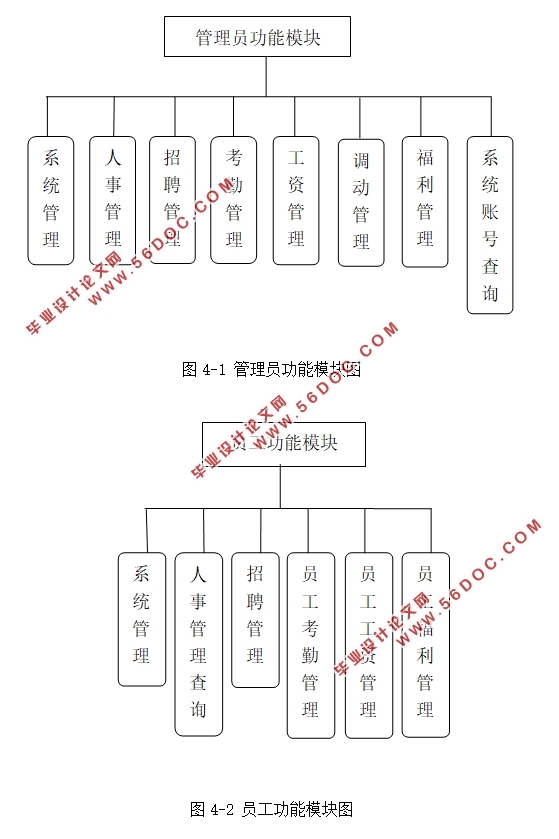
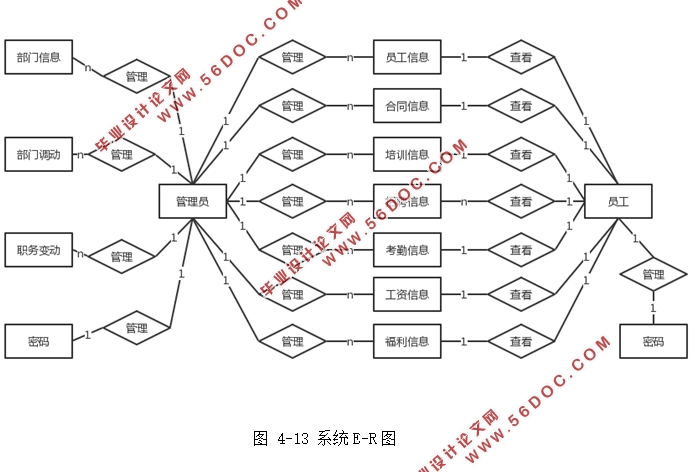
目 录
1 绪论 1
1.1 开发背景 1
1.2 国内外现状 1
1.3 开发意义 1
2 开发环境和相关技术 2
2.1 开发环境 2
2.2 Java语言 2
2.3 MySQL数据库 2
2.4 Tomcat服务器 2
3 需求分析 3
3.1 功能性需求 3
3.2 非功能性需求 3
3.3 可行性分析 3
3.3.1 经济可行性 3
3.3.2 技术可行性 3
4 系统设计 4
4.1 功能模块设计 4
4.1.1 管理员功能模块 4
4.1.2 员工功能模块 4
4.2 数据库设计 5
4.2.2 系统E-R图 5
4.2.3 数据库表 7
5 系统实现 10
5.1 框架配置 10
5.1.1 struts配置 10
5.1.2 hibernate配置 11
5.1.3 spring配置 11
5.2 管理员模块 12
5.2.1 用户登陆 12
5.2.2 系统管理 13
5.2.3 人事管理 14
5.2.4 招聘管理 17
5.2.5 员工考勤管理 19
5.2.6 员工工资管理 20
5.2.7 员工调动管理 21
5.2.8 员工福利管理 21
5.2.9 系统账号查询 22
5.3 员工模块 22
5.3.1 人事管理查询 22
5.3.2 招聘查询 24
5.3.3 考勤查询 24
5.3.4 工资查询 25
5.3.5 福利查询 25
6 总结 26
参考文献 26
致 谢 28
|















